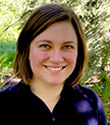Mar 22, 2023
Thomas Jefferson University Program Reflects on Nearly 50 Years of Producing Rural Doctors
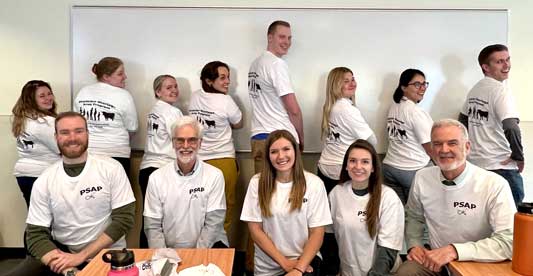
Growing up on a dairy farm in Curwensville, Pennsylvania, Doriann Lavery developed an early interest in medicine while watching her father care for their family's cows.
Lavery knew she wanted to return to a similarly rural setting someday as a family doctor. So when she heard about the Physician Shortage Area Program (PSAP) at Thomas Jefferson University (TJU) in Philadelphia — an initiative developed in the early 1970s to support medical students from rural areas who want to practice in rural areas — she was intrigued.
"I thought it was really neat that such a good school in a big city would have an interest in a small-town farm girl like me and in trying to get care to where there aren't as many resources," Lavery said.
Fifteen years after graduating from the PSAP, Lavery is a primary care physician in Phillipsburg, Pennsylvania, 35 minutes from her hometown. She's one of many graduates of the program who have returned to their rural roots to practice — and stayed there.
Over the nearly 50 years since it was established, the PSAP has consistently tracked and analyzed its own effectiveness in producing physicians who practice, and remain, in rural areas — and their findings may offer lessons for programs with similar goals.
Recognizing a need
In Pennsylvania, nearly half of all physicians practice in three of the state's largest counties: Philadelphia County, where the city of the same name is located; suburban Montgomery County; and Alleghany County, which contains the city of Pittsburgh. Meanwhile, nearly three-quarters of the state's population lives in its remaining 64 counties.
In neighboring Delaware, physicians are also disproportionately concentrated around urban centers: Roughly 20% of Delaware residents live in a rural area, but only 9% of physicians practice in rural areas.
To address these disparities, TJU's Sidney Kimmel Medical College established the PSAP in 1974. The idea behind the program was simple and remains the same to this day: recruit and selectively admit students from rural backgrounds who know they want to practice in a rural area someday, and offer support and resources to these students throughout their medical school experience. The program initially focused only on students who planned to practice family medicine but has since expanded to include students wishing to practice any medical specialty that's needed in rural communities.
You might think that a program like this requires tons of resources, but it's not rocket science.
"You might think that a program like this requires tons of resources, but it's not rocket science," said Robert Motley, MD, Director of the PSAP and a professor of family medicine at TJU. "You have to figure out how to make it work with what's available in your milieu, and the best way to do that is to look at the published data that comes from the PSAP and other successful programs."
Choosing wisely
Elizabeth Klingensmith, a third-year PSAP student, earned her undergraduate degree at Emory University in Atlanta, an experience that she said opened her eyes to disparities in urban and rural medicine after growing up in rural Pennsylvania.
…a lot of progress happens in urban communities that communities like the one I grew up in don't benefit from.
"I realized how different it is, and how a lot of progress happens in urban communities that communities like the one I grew up in don't benefit from," she said. "I learned the value of going and learning where you need to learn, but returning to a community that needs help."
When she read about the PSAP while applying to medical schools, "I was like, 'This is what I want to do,'" Klingensmith said. "I want to work in a community like the one I grew up in, because I know that there is a need in these communities."
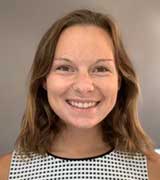
PSAP leaders attribute the success of the program largely to its admissions process. All PSAP applicants must complete a secondary application on top of their standard medical school application, which includes an interview and written questions about the applicant's rural background and their interest in the program. The program has also established a partnership with eight universities in the region, in which undergraduate students are recommended to the PSAP by a faculty committee at their respective schools after a separate interview and screening process.
I learned the value of going and learning where you need to learn, but returning to a community that needs help.
Three factors that are already known at the time a student applies to medical school — a rural background, a desire to practice in a rural area, and an interest in family medicine — are particularly useful in predicting whether that student will follow through on their plans to practice long-term in a rural setting, according to the university's analysis of student outcomes. Of all TJU medical school graduates who were found to be still practicing in a rural area three decades after graduation, 80% met at least one of these criteria.
"Students who really want to be in this space will often say, 'I grew up rural and I've experienced both the good and bad of that,'" Motley said. "We hear a lot of narratives about how someone's grandmother could not get care, or how they had to travel three or four hours to the closest major medical center, or how the only family doctor in their hometown has retired and left the town without a primary care physician."
Applicants are also asked to submit three letters of recommendation, which must be from people who live in the applicant's hometown or nearby — a former employer, for instance, or a high school coach, Boy or Girl Scout troop leader, or family friend. Klingensmith asked the priest at her hometown church for a recommendation, while Lavery submitted letters from her pastor and her high school principal.
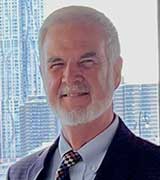
Ideally, Motley said, these letters will give the admissions team a sense of whether the applicant has previously talked about their desire to return to a community like the one they grew up in.
"You definitely get a flavor in the letters for whether a person is comfortable in their rural community and whether, when they say they want to go back and live there, it's genuine," Motley said.
'A wonderful dialogue'
While PSAP curriculum requirements mirror TJU's standard medical school curriculum, the program offers additional support mechanisms and rural-specific opportunities outside the classroom.
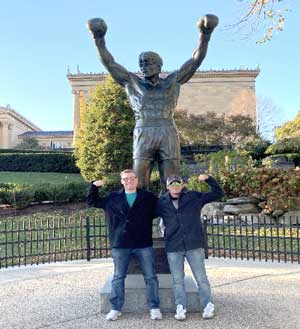
PSAP-specific faculty advisors offer support to students in the program, making themselves available for advice and guidance whenever needed. But peer support is another central part of the program, with each first-year student assigned to an older student mentor and each PSAP cohort holding regular group meetings to commiserate over challenges, celebrate their successes, and support one another in acclimating to the school's urban setting. In her first year, Klingensmith and her PSAP classmates met monthly, she said, with meetings gradually becoming less frequent in their second and third years as schedules became busier.
"It's still a really good way to decompress," Klingensmith said. "Some months are harder than others, but then other times we'll get to share our happiness, too."
Coming from a rural setting and never having visited Philadelphia before her medical school interview, Lavery said she found life in the city "intimidating" when she first enrolled at TJU.
"It was nice to have some extra support and to know a few faces that had the same background that you did," Lavery said.
As a requirement of the program, each PSAP student must complete a six-week rotation in a rural community. Klingensmith completed her rotation — "my favorite rotation I've had this year" — in a family medicine office in Latrobe, Pennsylvania, not far from her hometown.
"It was really great for me because I could relate to a lot of the people and be like, 'Oh yeah, my high school used to play Latrobe,'" Klingensmith said. The rotation also deepened her understanding of a family doctor's role in a rural community, she said: "It's very different in that the physicians there were very independent and willing to do a bit more before referring," she explained. "We think of family medicine visits as being too quick to get anything done, but in 20 minutes we could accomplish a lot."
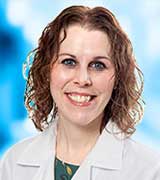
Lavery also completed her rotation in Latrobe, an experience that had a "big impact" on her — so much so that she went on to complete her residency there after graduation.
"We got to see everything there, because we didn't have to compete with different specialties or subspecialties," Lavery said. "The specialists only had us to teach, so they would grab us and pull us into everything."
A strong alumni network for the program also provides students with valuable insights into rural medicine, Motley said, with graduates joining as guest speakers at group lunches or conducting virtual or in-person question-and-answer sessions with students. Other graduates of the program have hosted current students in elective preceptorships.
They're getting a glimpse of, 'Hey, what does life look like 10 or 15 years down the road for me?' And it's been a wonderful dialogue.
"They're getting a glimpse of, 'Hey, what does life look like 10 or 15 years down the road for me?'" Motley said. "And it's been a wonderful dialogue."
Tracking outcomes
TJU has closely tracked and analyzed medical student and graduate outcomes since 1964, giving PSAP leaders measurable insights into the program's success. Fifteen academic papers and one book have been published on PSAP outcomes over the years.
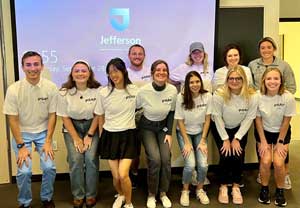
PSAP students are over eight times more likely to practice rural family medicine than their non-PSAP classmates, according to data collected between 1978 and 2002, and approximately three times more likely to practice any specialty in a rural area. Another analysis of university data found that the PSAP had produced 12% of all rural family physicians in Pennsylvania.
The program's graduates aren't just more likely to practice in a rural area — they also have a track record of staying in rural areas. A long-term study of PSAP alumni found that roughly 70% had remained in rural family practice in the same area for at least 20 to 25 years after they first began practicing, and another 10% had moved to another rural area.
We are having applicants whose parents were PSAP graduates.
A half-century after it began, the PSAP is now "well into its second generation," Motley said: "We are having applicants whose parents were PSAP graduates."
Fifteen years after her own graduation, Lavery says that, as a rural physician, she's seen "so many specialists come and go" from her small community, making her all the more appreciative of the PSAP's approach to recruiting and supporting rural students. When she was a student, she likely couldn't have guessed the details of exactly where she would end up, Lavery says. But with the support of the PSAP "steering me in the right direction," her passion for rural medicine has remained.
"I went into [the program] figuring that I was going to be a family doctor in a rural area," she said, "and I've stuck to that."

